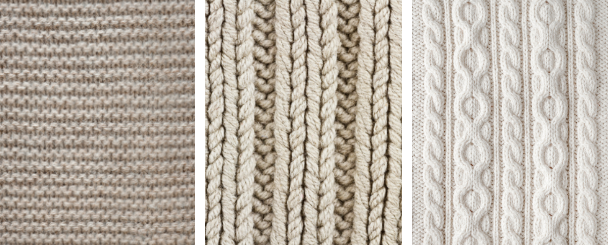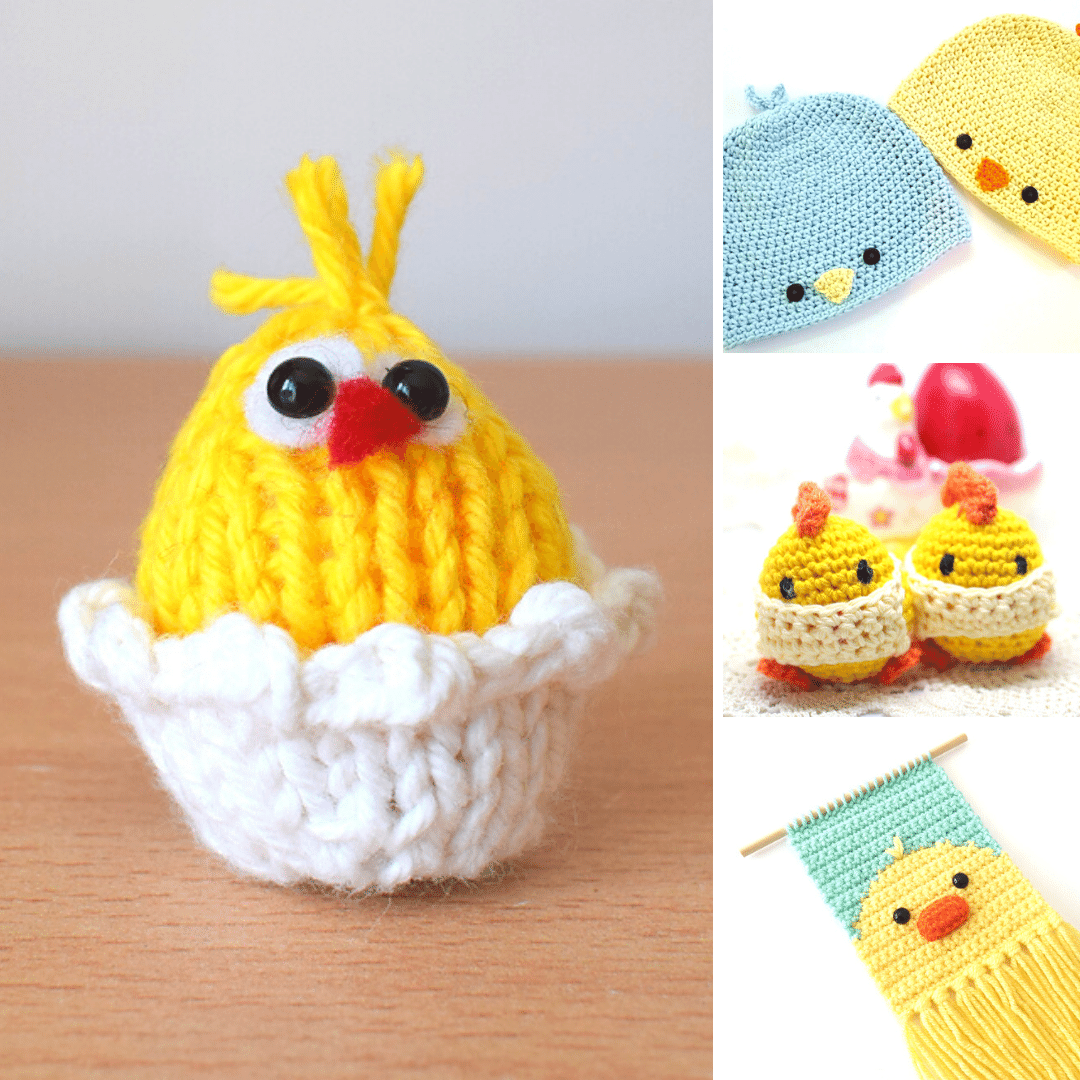How many types of knitting are there?
To someone who hasn’t tried knitting, the process of knitting can be very daunting. People have often asked how many types of knitting are there?
Actually, there is only one type of knitting. Knitting is the process of creating and joining loops to create fabric using two needles and a continuous strand of yarn.
As far as historians know, knitting dates back to 11th Century Egypt but suggests it may go back even as far as 3-5 Centuries. It was the same principle of using needles to create interconnecting loops to make fabric.
This post may contain affiliate links. Please see my full disclosure for more information.
As knitting spread throughout the world, different cultures discovered various techniques they could create. Those techniques varied from how needles were held, to colorwork styles, as well as manipulating stitches to create a multitude of stitch patterns. Read alllllll the way to the end to learn about basic stitches.
Related Blog Posts
What are the basic stitches in knitting?
All of knitting is based on two simple stitches, the knit stitch and the purl stitch. Everything else is a combination or variation of those two stitches.
The knit stitch is made by creating a loop in the back of your work. The purl stitch is made by creating a loop in the front of your work.
It’s that simple.
You would think that two stitches would not provide much variety, but they do!
I’m going to provide an overview of some of the techniques used to create variations on these stitches. These variations are actually stitch patterns, but not commonly called that. Knitters just tend to refer to them as stitches.
It can be a little confusing, but once you’ve knitted for a bit, you’ll start to know when someone refers to a stitch (pattern) other knitters know what they mean. For example, a knitter might say, “I created the body of this sweater in stockinette stitch, but the cuffs and hems are ribbed.”
There are thousands and thousands of stitch patterns. Let’s take a look at some of the most common stitches and discuss the knits and purls that were used to create each.
Once you see the stitch patterns broken down this way, you’ll realize they are much simpler than at first glance. As I mentioned before, they are all a combination of variation of knits and purls.
Garter Stitch
If you knit every row, you’ll end up with rows and rows of ridges. This is called garter stitch and it is the most basic of all knitted fabric.
It’s knitting at it’s simplest form.
We are often asked what is the difference between garter stitch and knit stitch? Well, you’ll make the knit stitch to create the garter stitch pattern.
I’ll show you how to garter stitch (knit every row) here.
Stockinette Stitch
Stockinette (also known as stocking stitch) is created by alternating rows of knit stitches and purl stitches. When this is done, it creates the signature knitting that most people know. There are smooth little V’s on the front and ridge rows on the back.
Check out this YouTube video on how to knit stockinette stitch.
Reverse Stockinette Stitch
This is exactly the same as stockinette stitch; alternating rows of knit and purl stitches. The only difference is the ridge rows are considered the front of the piece and the V’s are considered the back of the piece.
Give reverse stockinette stitch a try by following along with the video below.
Rib Stitch
What would happen if you alternated stitches across the row (knit one stitch, purl one stitch) to create columns of knits and purls. You’d end up with ribbing. This technique creates a highly stretchable fabric which is why it is often used for collars, cuffs, and sweater bands.
The video shown below shows you how to knit a 1x1 rib. That means that it’s one knit and then one purl to create the pattern. Ribbing can be done using more combinations 2x2, 3x3, and 4x4 for example.
Seed Stitch
In the last video, you learned how to do the rib stitch. Notice how the knits and purls are lined up into perfect little columns? What if you alternated the stitches? So the pattern would be knit one, purl one, but then on the next row you reverse it.
It’s a stitch pattern and it’s called seed stitch. It’s a very textured pattern and not springy the way ribbing is. Here’s how to create seed stitch.
Beginner Lace Stitch
A lot of people think lace knitting is very intricate and difficult to knit.
Well, it can be, but in this case it’s not.
There are hundreds (if not thousands) of variations to knitting lace. All of them are just creating patterns in the knitting by adding yarn overs (wrapping the yarn around the needle) and knitting two stitches together.
One of the things people find intimidating about lace is that more intricate patterns often use charts. The reason for this is so that the designer doesn’t have to write out line by line to create a REALLY long knitting pattern. Plus, it cuts down on YOUR reading time. Charts allow you to quickly glance at a row of instructions and know what is going to happen next.
This beginner lace video doesn’t use a chart and it’s easy to get the hang of it.
One of the nice things about knitting lace is that many of the projects have repeats so you can get a nice rhythm going with your knitting. It’s enough to keep your mind occupied, but not so difficult you can’t concentrate on anything else.
Here is a very easy to follow beginner lace stitch YouTube video.
Cable Stitch
Cabling is another stitch that seems very difficult, but once you see how it’s done, you’ll know that it’s something you can do!
As with all of the other stitches we have discussed, cables are made using the same knits and purls. The only difference is that to create the “cable”, you’ll be twisting one row of stitches.
The following video provides really easy to follow instructions to guide you through the cabling technique.
Once you have the hang of basic cables, moving on to more intricate ones is easy.
This video is a beginner guide to knitting cables.
Fair Isle
Knitting colorful pattern repeats into your work is known as “Fair Isle” or colorwork knitting. This type of knitting uses those same knits and purls, but alternating colors to create interesting and beautiful patterns.
Fair Isle knitting usually consist of two colors per row. The colors are carried along creating floats along the back of the project. What’s important to know about Fair Isle is that since the colors are carried across the color changes need to happen over just a few stitches.
This type of colorwork is used to created color patterns.
For example, knit five stitches in red, knit 2 in white, then change back to red. This allows the floats to be carried comfortably.
If the colors changes are really long or isolated, then intarsia knitting is what you should be doing. I’ll cover that next.
Intarsia Knitting
Intarsia is also colorwork knitting but there is one key difference from Fair Isle. Fair Isle color changes happen frequently across a row and both colors are carried along the back of the work.
With intarsia, the colors are NOT carried along the back - the colors are worked in sections. You’ll work to the color change, drop the old color and pick up the new color. This type of colorwork is most often used for motifs.
Here’s a helpful video that covers easy intarsia knitting.
As I mentioned earlier, there are thousands of stitch patterns and techniques you can try with knitting. This is a good overview of popular stitches you may come across in your knitting adventure.
Now it’s Your Turn - Make these Stitches
Grab a pair of needles, a ball of yarn and get started! If you don’t know where to begin start here.









